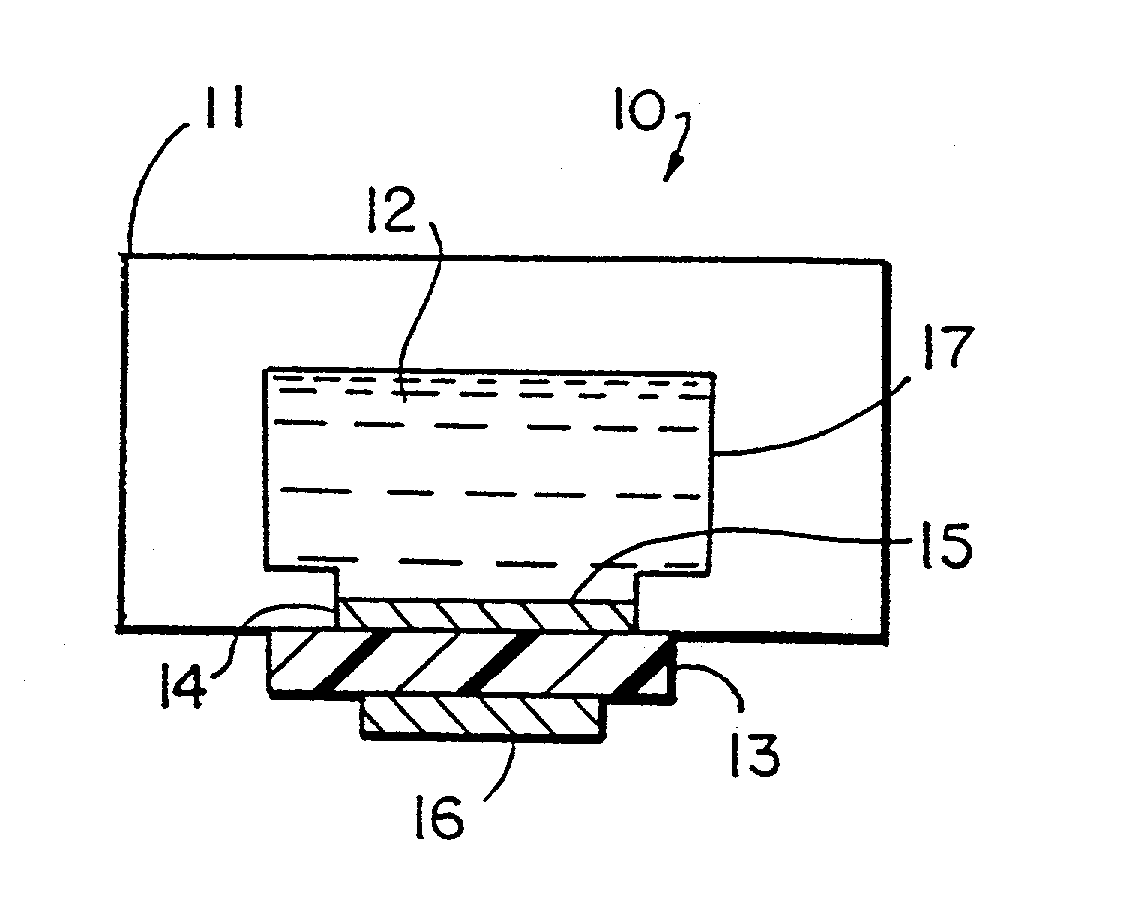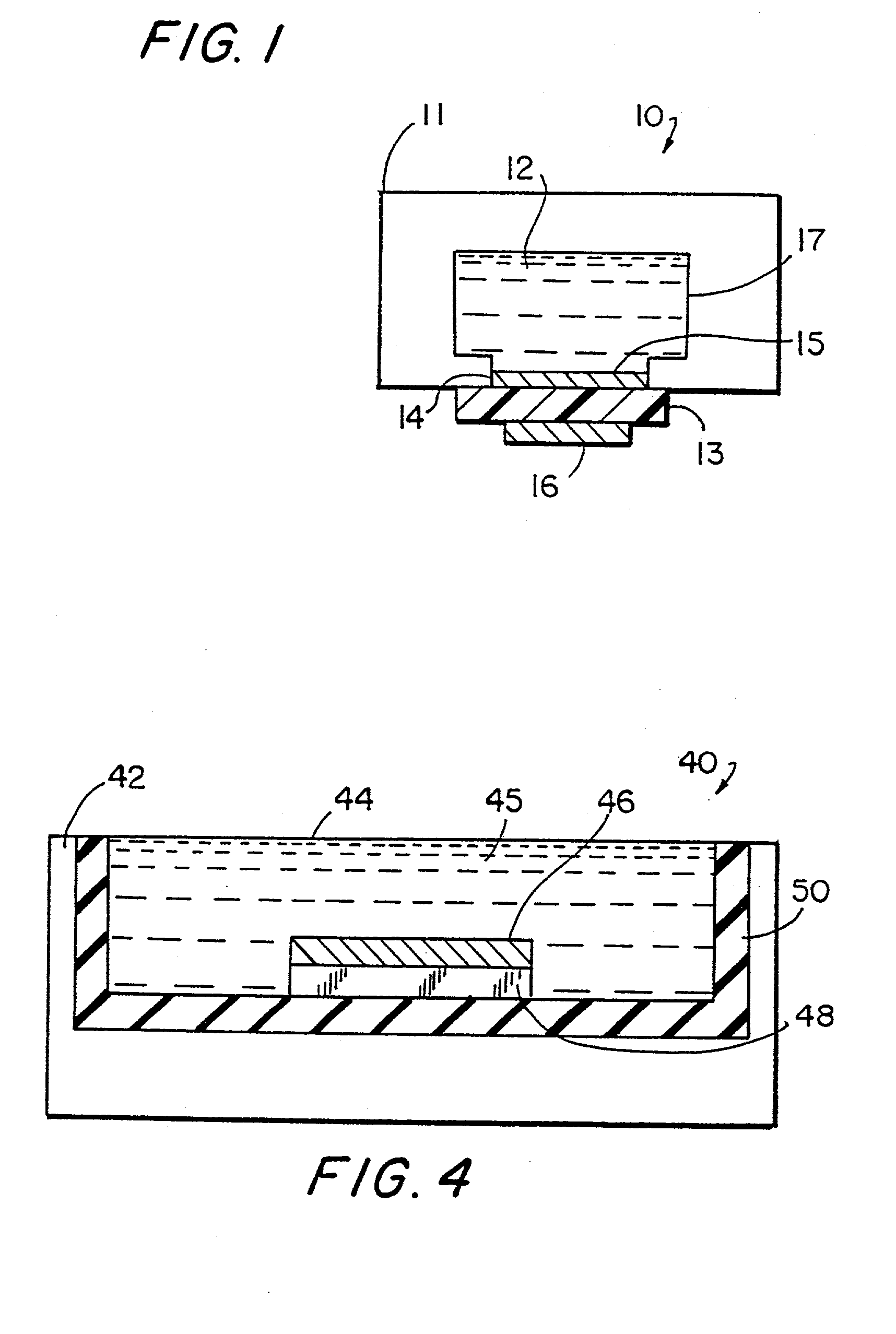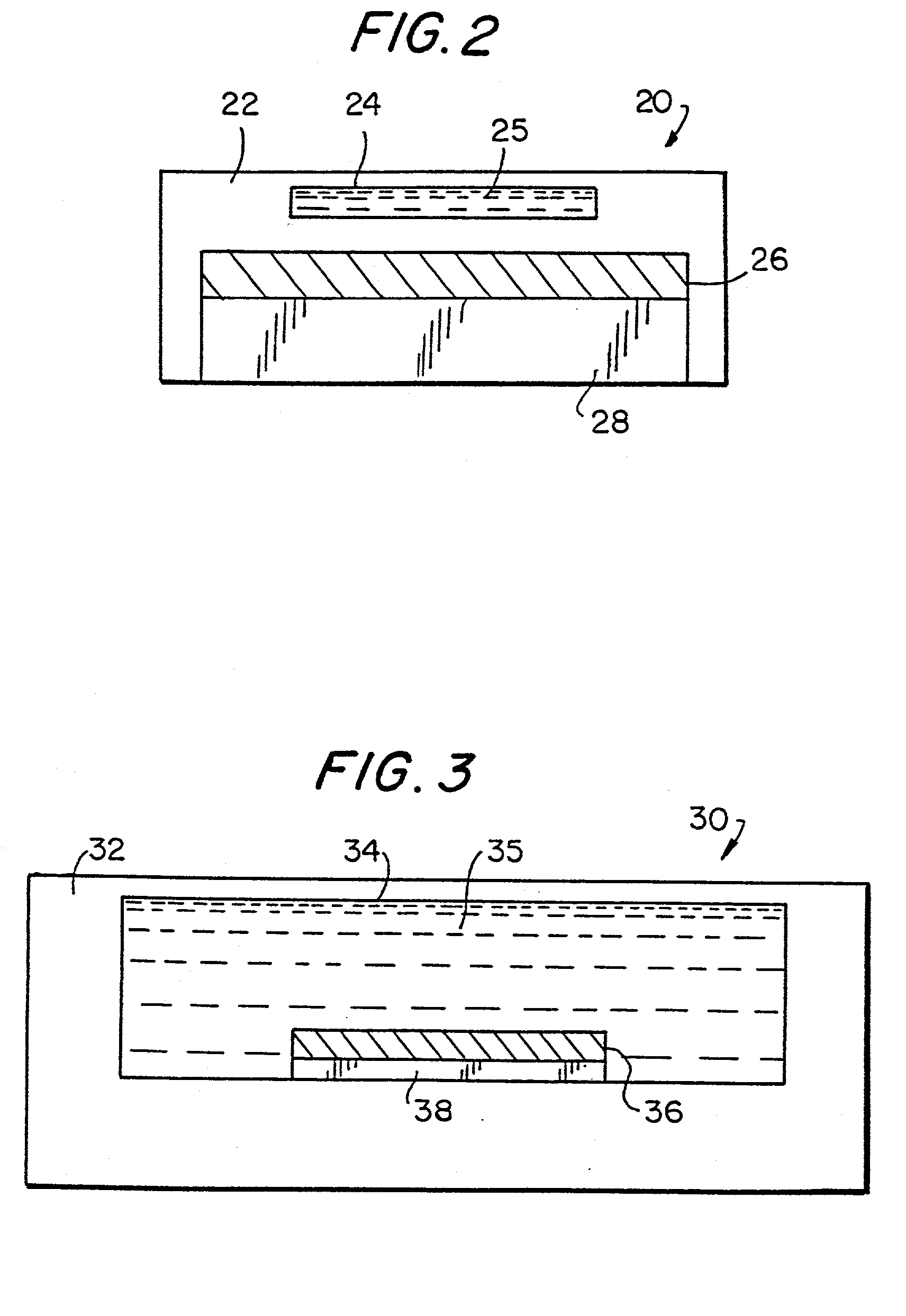Assay sonication apparatus and methodology
a technology of sonication apparatus and assay, which is applied in the direction of material analysis, shaking/oscillating/vibrating mixer, volume/mass flow measurement, etc., can solve the problem of affecting the accuracy of diagnosis of patients, certain diagnostic tests are entirely unsuitable for situations, and the chemical reaction in such processes is not practicable to proceed to meaningful completion. , to achieve the effect of facilitating concise explanation, improving assay reaction rate and precise toleran
- Summary
- Abstract
- Description
- Claims
- Application Information
AI Technical Summary
Benefits of technology
Problems solved by technology
Method used
Image
Examples
example 1
Preparation of Fibril-Plastic Composites
[0121] Composite plastic materials comprising carbon fibrils in a polymer matrix were prepared by methods analogous to those described in copending U.S. application Ser. No. ______ filed on even date herewith, and PCT Application No. ______ (WO ______) filed on even date herewith, both of which are incorporated by reference above. To give a better understanding of the following examples, a brief description of the steps for preparing the composites used in the examples is provided. Carbon fibrils (Hyperion Catalysis) were compounded with poly(ethylene-co-vinyl acetate) (EVA) and the resulting composite material was extruded into sheets. The sheets were oxidized with chromic acid to expose carbon fibrils near the surface and to introduce carboxylic acid groups. Protein was immobilized on the composite by activation of the carboxylic acid groups with ethyl-dimethylpropyl-carbodiimide (EDC) in the presence of N-hydroxysuccinimide (NHS) followed b...
example 2
Increasing the Rates of Binding Reactions at a Solid-Phase Support with Sonication: Use of a Low-Power Piezoelectric Buzzer
[0122] Streptavidin was immobilized onto chromic acid-oxidized EVA-fibril composite as described in Example 1. A {fraction (5 / 16)} inch diameter disc cut from this material was placed in the well formed by placing a gasket on a low-power low-frequency acoustic piezoelectric transducer. Treatment of the disc with a solution containing a biotin-labeled .alpha.-Fetoprotein (anti-AFP) antibody (Boeringer-Mannheim, 50 uL, 41 nM) led to immobilization of the antibody. The binding reaction was essentially complete in 3 minutes upon sonication by the piezoelectric transducer. The extent of the reaction was determined using a biotin- and TAG1-labeled antibody and measuring bound antibody by ECL. The same reaction took more than 20 minutes when mass-transport occurred through diffusion alone that is, without sonication.
[0123] The antibody-coated composite was washed with ...
example 3
Increasing the Rates of Binding Reactions at a Solid-Phase Support with Sonication: Use of an ECL Cell Instrument with an Integrated Piezoelectric Sonication Device
[0124] EVA-fibril composite was treated with a water-saturated argon plasma and coated with an anti-AFP antibody (Boeringer-Mannheim) as described in Example 1. A 10.times.15 mm rectangle of the composite was placed in an ECL cell (see FIG. 6).
[0125] The sample (10 uL) and a solution containing a TAG1-labeled anti-AFP antibody (Boeringer-Mannheim, 50 uL, 12 ug / mL) were combined and introduced into the cell. The binding reaction was allowed to proceed for 3 minutes during which time a piezoelectric transducer (sonication generator) was driven at its resonance frequency (47 KHz) at a power of approximately 2.5 W. The transducer was turned off, the cell was flushed with ORIGEN Assay Buffer (IGEN, International), and the voltage at the composite was ramped from 0 to -0.8 to 1.2 V (vs. Ag / AgCl) at a rate of 0.1 V / s. The differ...
PUM
| Property | Measurement | Unit |
|---|---|---|
| power | aaaaa | aaaaa |
| frequency | aaaaa | aaaaa |
| frequency | aaaaa | aaaaa |
Abstract
Description
Claims
Application Information
 Login to View More
Login to View More - R&D
- Intellectual Property
- Life Sciences
- Materials
- Tech Scout
- Unparalleled Data Quality
- Higher Quality Content
- 60% Fewer Hallucinations
Browse by: Latest US Patents, China's latest patents, Technical Efficacy Thesaurus, Application Domain, Technology Topic, Popular Technical Reports.
© 2025 PatSnap. All rights reserved.Legal|Privacy policy|Modern Slavery Act Transparency Statement|Sitemap|About US| Contact US: help@patsnap.com



